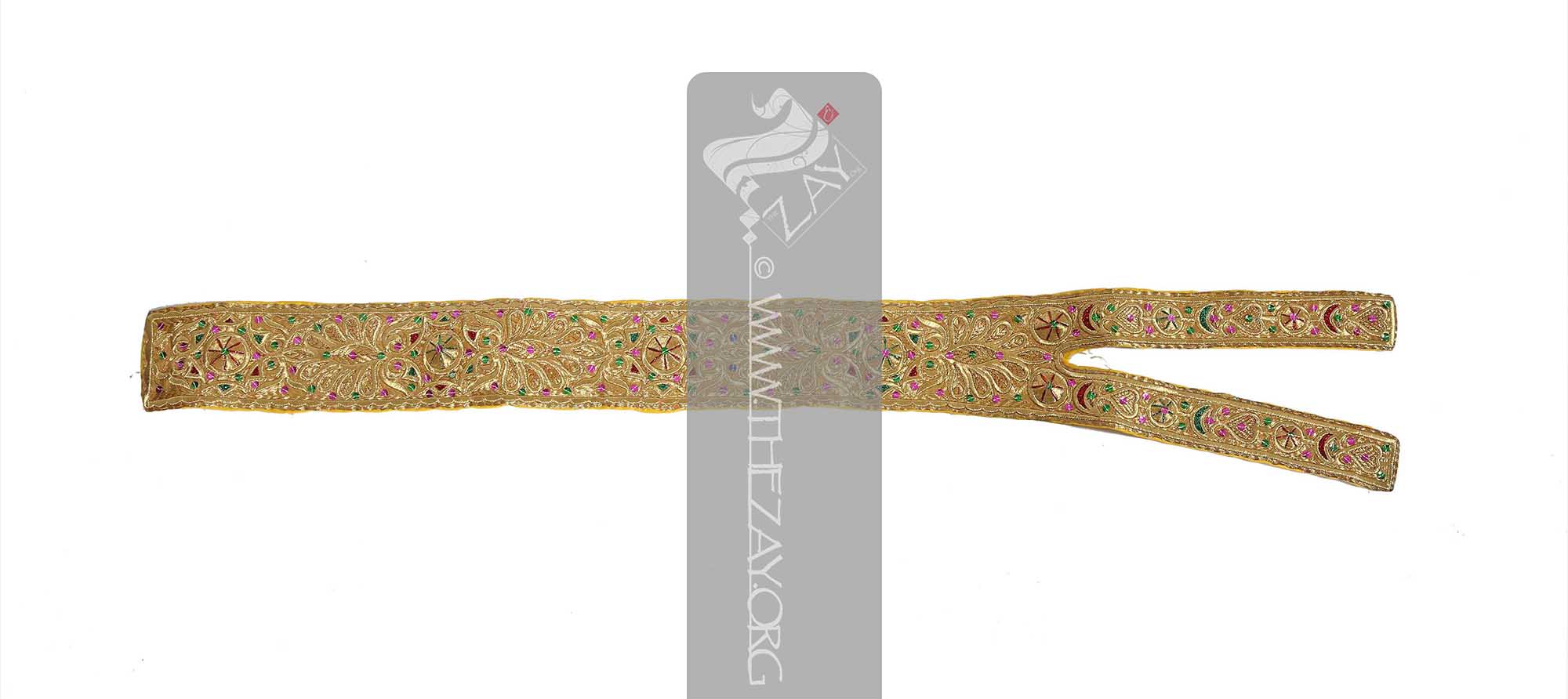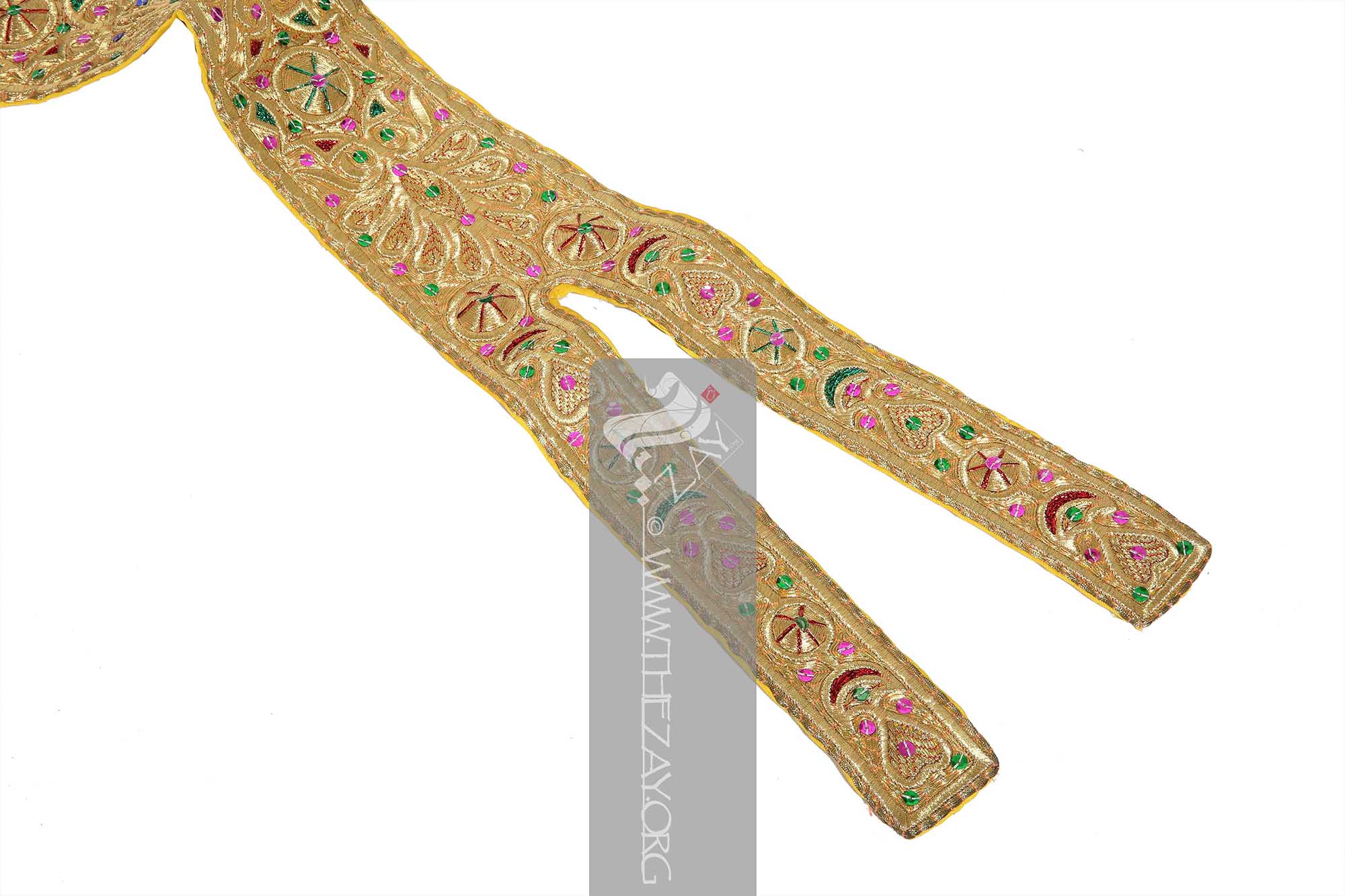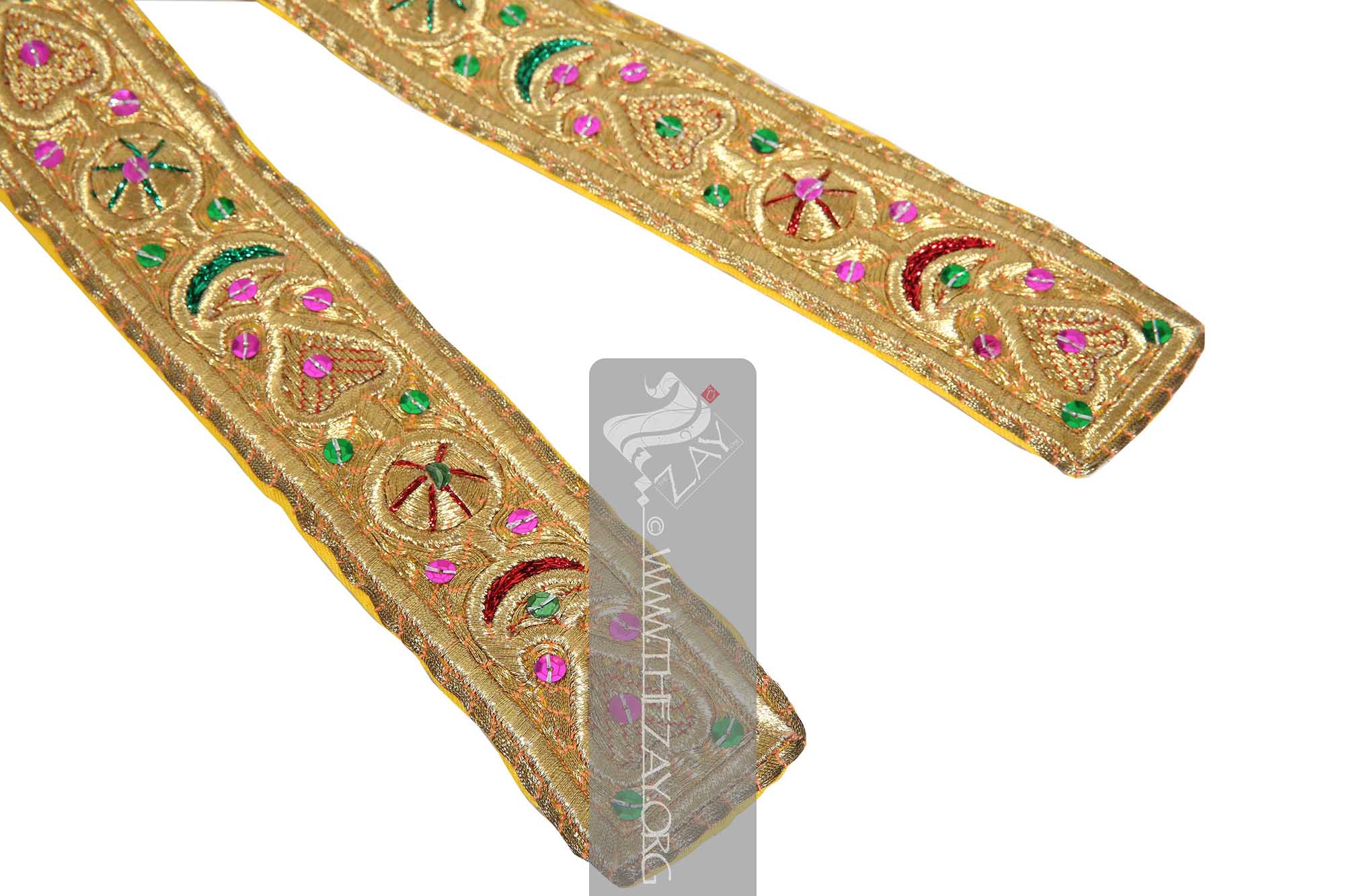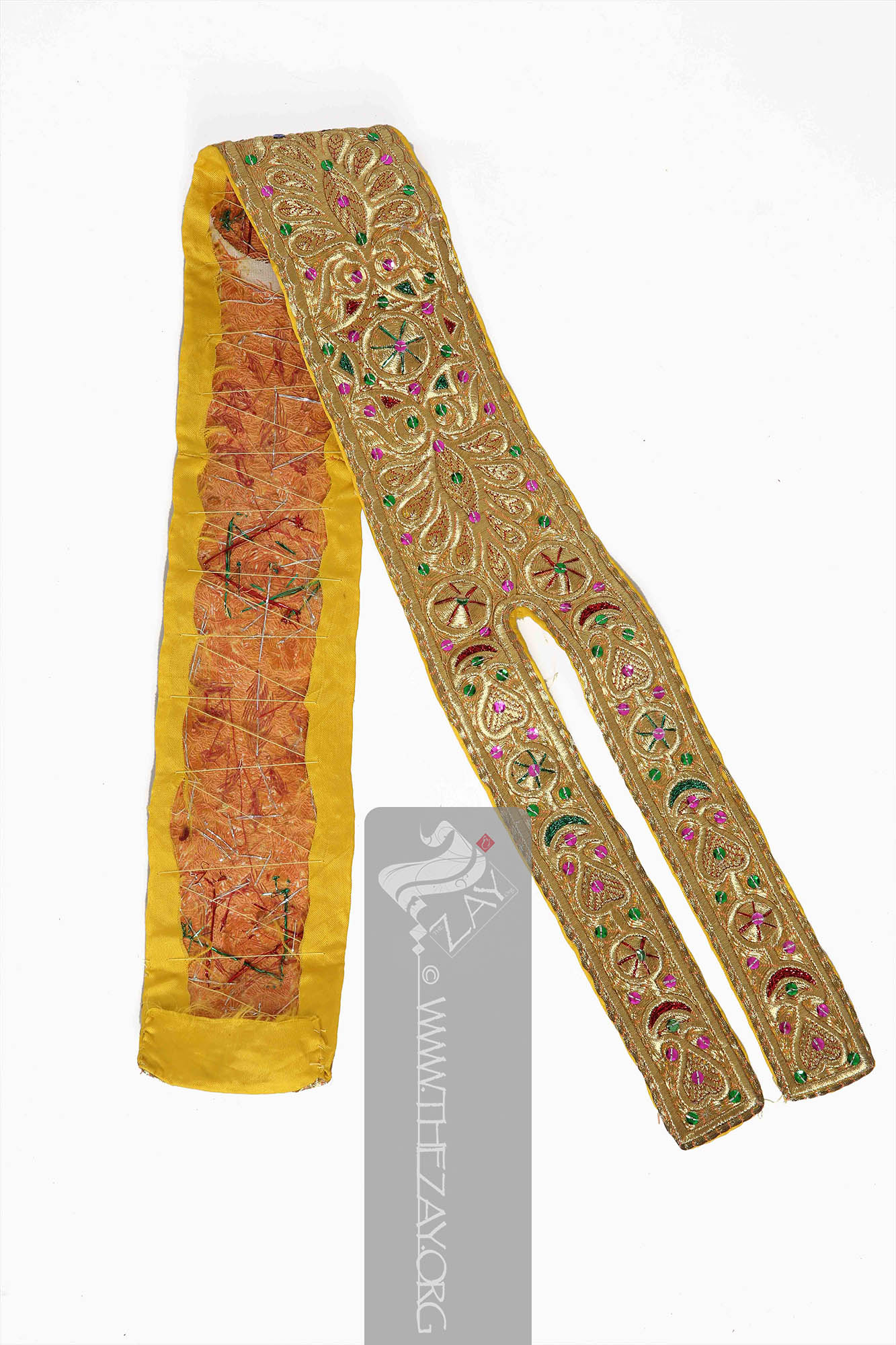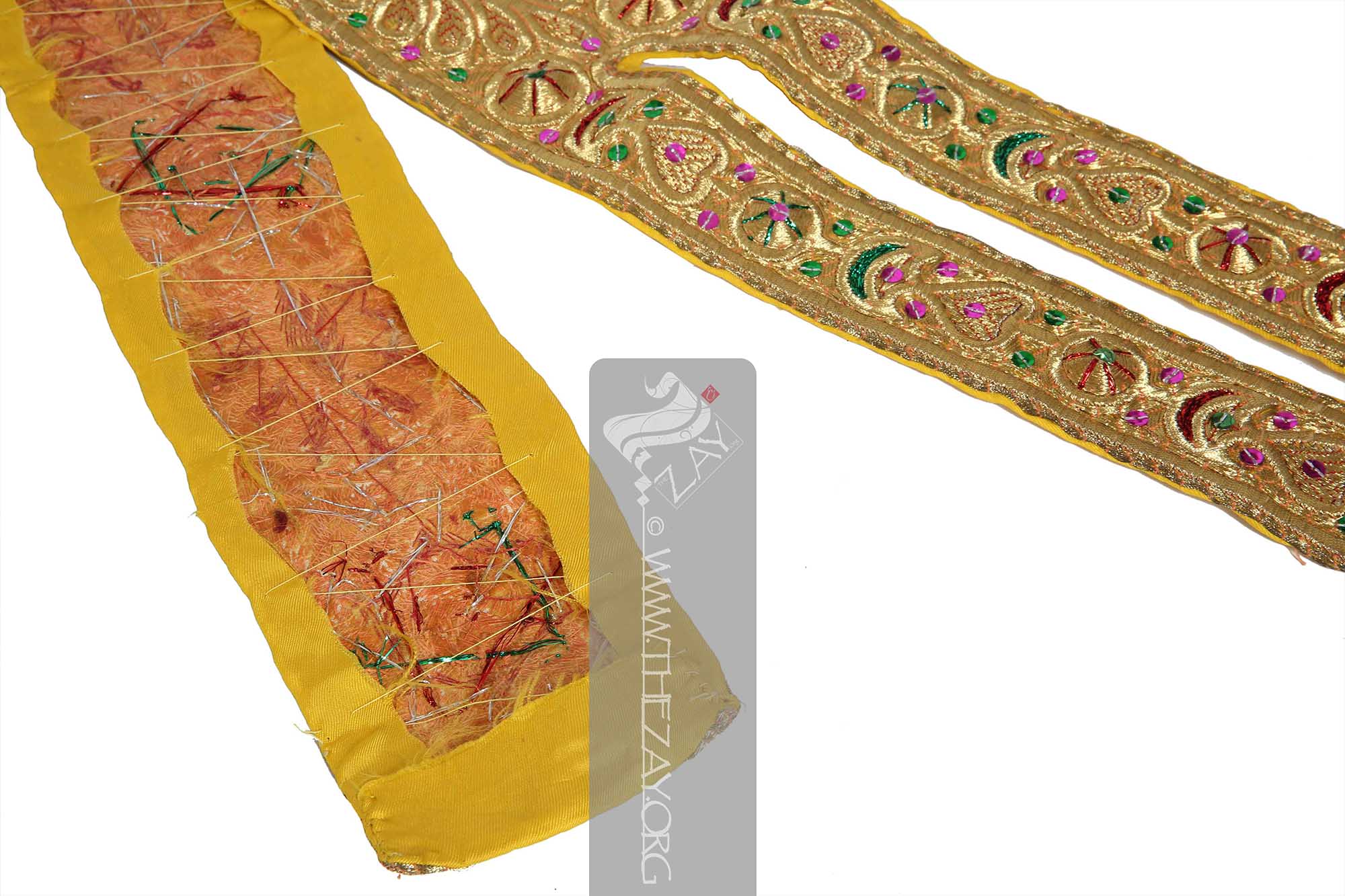Object HistoryThis metal woven traditional style detachable golden collar (
peshkurta
Peshkurta: (Persian: Kurtah – A long loose collarless tunic or shirt of Central Asian origin), is a detachable collar with placket slits for the neckline traditionally woven with silk and embellished with gold to be worn or stitched on top of a long loose tunic or shift dress. ) was gifted by Ms. Emma Farmer – COO of The
Zay
Zay: (Arabic: costume, Pl. azyaā’), a set of clothes in a style typical of a particular country or historical period. Initiative – to The
Zay
Zay: (Arabic: costume, Pl. azyaā’), a set of clothes in a style typical of a particular country or historical period. Initiative to enhance its collection. Ms. Farmer acquired this piece from a local market in Bukhara during her visit in 2021
Raised in the Middle East and educated in the UK, Ms Farmer has a profound understanding and passion for bridging gaps regarding culture and business, whilst navigating geo-political environments.
A highly motivated, award-winning, and experienced project leader in communications and business development Ms. Farmer has over 15 years of experience in the field.
She strategically grew Dubai Lynx from 2011 to 2016 as a festival Director and left a legacy, building the foundations that see the festival thrive across multiple markets today. Now an entrepreneur and mother, Ms Farmer has set up ‘Chameleon’, helping businesses reach their potential whilst ensuring they do better for good.
Through her role as COO (2019-2022), she has helped The
Zay
Zay: (Arabic: costume, Pl. azyaā’), a set of clothes in a style typical of a particular country or historical period. Initiative establish and strengthen its roots.
Object Features This is a heavily embellished detachable collar or
peshkurta
Peshkurta: (Persian: Kurtah – A long loose collarless tunic or shirt of Central Asian origin), is a detachable collar with placket slits for the neckline traditionally woven with silk and embellished with gold to be worn or stitched on top of a long loose tunic or shift dress. traditionally worn by women across Central Asia but typically famous amongst the women of Samarkand, Bukhara, and Sahri Sabz. Constructed of metallic and silk
floss
Floss: (Old French: flosche – nap of velvet), is a type of silk fibre obtained from the cocoons of wild silkworms. It is characterized by its long, fluffy fibers that are not tightly woven, making it ideal for use in various textile applications such as embroidery, lace-making, and sewing. thread embellished over a simple silk fabric strip using primarily (
couching
Couching: (Latin: collocare – Place together), in needlework and embroidery couching is a technique in which yarn or other materials are laid across the surface of the ground fabric and fastened in place with small stitches of the same or a different yarn
) and (
satin_stitch
Satin_stitch: (Synonym: Damask Stitch), is a type of flat embroidery stitch that creates a satin like smooth and shiny surface by closely spaced stitches, covering an entire area or shape.) style it also has touches of green and pink plastic or metal chips that were cut in floral shapes and (
appliqued
Appliqued: (French: appliquer – Apply), ornamental needlework where small pieces of decorative fabric are sewn on to a larger piece to form a pattern.) over the base fabric. There are also green and pink sequins stitched to the piece as further embellishment. The base of this
peshkurta
Peshkurta: (Persian: Kurtah – A long loose collarless tunic or shirt of Central Asian origin), is a detachable collar with placket slits for the neckline traditionally woven with silk and embellished with gold to be worn or stitched on top of a long loose tunic or shift dress. is made of a stiff fibre with the underside completely unlined.
Links
- Valérie Bérinstain, Mary Hunt Kahlenberg, Zaira Mis, Marcel Mis. Asian Costumes and Textiles from the Bosphorus to Fujiyama: The Zaira and Marcel Mis Collection. California: Skira, 2001.
- Suleman, Fahmida. Textiles of the Middle East and Central Asia (British Museum) The Fabric of Life. London: Thames and Hudson, 2017.
- Embroidery from Afghanistan Fabric, folios. Sheila Paine. Washington: University of Washington Press, 2006.
- Sukhareva, Olʹga Aleksandrovna. Suzani
Suzani: (Farsi: suzandozi : needlework, from Farsi: suzan: needle, dozi: embellishment), type of embroidered and decorative Central Asian tribal textile art usually on a cotton fabric, embroidered in both silk or cotton thread with primarily chain, satin, and buttonhole stitches as well as couching technique. : Central Asian Decorative Embroidery. Samarkand: SMI Asia, 2013.
- Pennell, Suzanne. The Art of Gold Embroidery from Uzbekistan. Brisbane: Story Bridge Press, 2015.
- https://rjohnhowe.wordpress.com/2009/03/25/christine-brown-on-uzbek-clothing-part-1-the-lecture/
- https://rjohnhowe.wordpress.com/2009/03/25/christine-brown-on-uzbek-clothing-part-2-material-in-the-room/
- https://unesdoc.unesco.org/ark:/48223/pf0000130205
- https://asiasociety.org/central-asia-political-history-19th-century-present
- https://referenceworks.brillonline.com/entries/encyclopaedia-iranica-online/clothing-COM_7759?lang=fr#COM-10186
- https://www.internationalwardrobe.com/lexicon-2/der-mantelchapan-in-usbekistan-2/
- https://www.internationalwardrobe.com/lexicon-2/der-mantelchapan-in-usbekistan-2/
- https://www.textile-forum-blog.org/2023/01/on-the-roads-of-samarkand-wonders-of-silk-and-gold/




